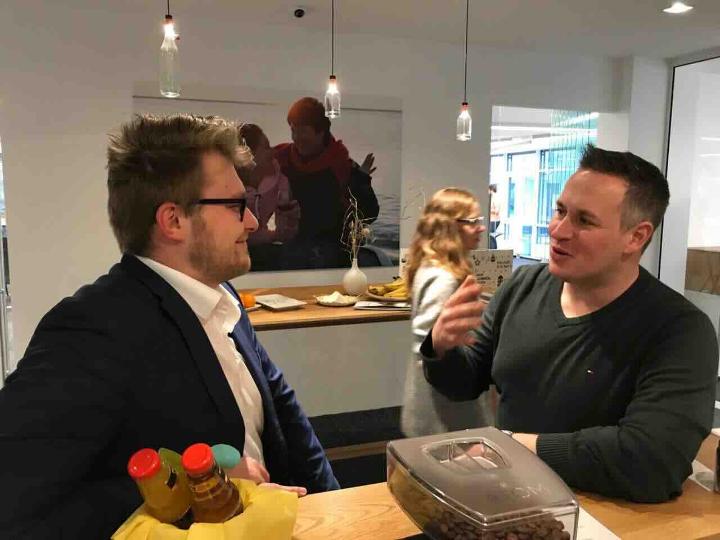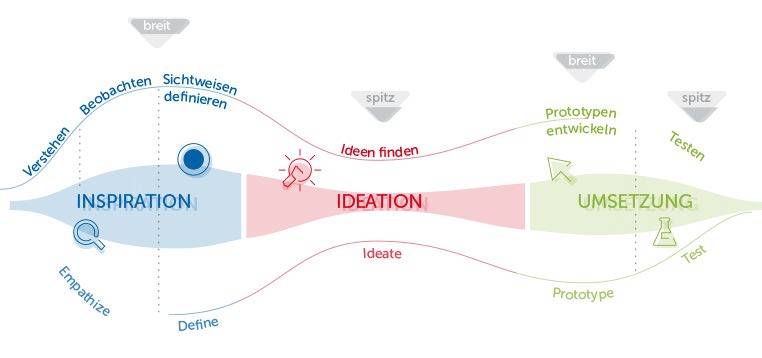In recent years, design thinking has become increasingly popular as an innovation tool and is now an integral part of many companies. "About half of the largest companies in Germany now practice Design Thinking in some way," says Dr. Timm Krohn, authorized signatory at HPI and Managing Director of the HPI Academy.
This blog article is therefore intended to shed more light on design thinking and its integration into agility in an expert interview with Björn Ruland.
Max: Hello Björn, nice that you found time for a few questions today. You are literally an "old hand" in the field of Agility, But what originally prompted you to delve deeper into this area?
Björn: I got my start in the agile working world at Deutsche Telekom over 10 years ago. Back then, I worked in HR and was responsible for strategic and operational projects with my team. Agility and at that time in particular Scrum until then I only knew Scrum from my HR role when it came to social partner negotiations. However, I was curious and took the next opportunity to design a project with the help of Scrum in the role of Product Owner. In this role, I designed the workplace of the future for Deutsche Telekom.
Max: What does agility mean to you?
Björn: Agility is a difficult word for me personally. Almost everyone works and lives in an agile way, even if they haven't acquired any complicated knowledge through books, podcasts, certifications or similar. For me, agility is therefore just another buzzword that has found its way into the companies of this world. Much more interesting are certain principles of collaboration - transparency, regular delivery of value, empowerment and self-organization, inspection and adaptation as well as a consistent pace. These are all parameters that have been successfully tested in practice and successfully promote agility and corporate development.
Max: Design thinking is a particular passion for you, how did that come about? And how does it fit in with agility?
Björn: Any method is suitable for agility. It doesn't matter whether we use classic project management or Agile methods to use. It depends on your own attitude and corporate culture - on the principles of collaboration just described. However, it is also true that I particularly enjoy using design thinking. You can achieve great and unexpected results, it gives you a lot of fun back at work and we achieve tremendous learning effects without losing sight of the costs. To get to know the Design Thinking method, I decided to attend a seminar on HPI in Potsdam and was immediately infected by the Design Thinking virus. I tried it out in practice with my clients and we had great success with it. Together with my 4craft-team, we then decided to further professionalize the topic and undertake specific coach training.
Max: In your opinion, when is Design Thinking most suitable?
Björn: I realized relatively quickly that this tool provides a great structure for operating in unfamiliar spaces and approaching a solution step by step. These spaces arise in every type of work - whether in typical cross-sectional areas such as HR, controlling and corporate development or, of course, in development and production. And it is precisely in these areas that I like to apply design thinking, but it is not limited to them. There are prominent examples of this outside of corporate organizations - I'm thinking of the theater or Hannover Zoo.
Max: In the near future, 4craft and wibas will be offering Design Thinking courses themselves. What content will the 3-day intensive course on Design Thinking cover?
Björn: We make sure that everyone is equipped with the necessary tools of a design thinker. This includes not only understanding the key factors of "people", "space" and "process", but also being able to combine them intelligently. In this way, we enable our participants to take the knowledge they have gained back to their own company and try it out. We provide completely new insights into an exciting and eventful way of working to successfully tackle complex challenges.
Max: And what makes the courses so special?
Björn: We want to teach the participants how to apply design thinking as practically as possible. To this end, we have developed a concept that makes it possible to work in small groups without having to forego the learning effects of the other groups in the course. We teach in a consistently practical way and can still provide our people with a variety of methods and start-up aids for use in their own company. What's more, we work in great premises that convey the desired flair right from the start.
Max: If you had to give readers 3 tips for starting a successful design thinking project, what would they be?
Björn: It's as simple as it is complicated. It's about simply getting started, taking the first step. In terms of the key factors, I recommend always clearly separating the solution space from the problem space in relation to the process. This is how I maintain my focus. In terms of people, I recommend a cross-functional team - as diverse as possible. The different perspectives promote creativity in finding solutions. And on the subject of space: a room should enable work, not prevent it. A well-equipped space in which different work situations can be mapped out and which promotes the five principles of collaboration is an enormously important component for successful design thinking.



Write a comment